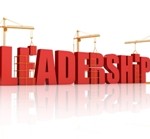 By Marcel Schwantes,
By Marcel Schwantes,
In this Covid crisis, leaders are faced with changing conditions as never before. Social distancing, wearing facial masks, restrictions on frequenting bars, restaurants, gyms, (foreign) travel, and much more.
So naturally, employees and followers check whether their leaders also walk the talk and show the way. Two weeks ago, the government of the Netherlands imposed heavy restrictions on foreign travel. At the same time, King Willem-Alexander went on vacation in Greece. A huge outcry followed and the king was forced to return the day after he had arrived.
This illustrates that in times of crisis, more than ever, people look for authenticity in their leaders; they should set the example for their followers in attitudes and behavior.
Jan-Benedict Steenkamp, author of the new book Time to Lead: Lessons for Today’s Leaders From Bold Decisions that Changed History, explains that “truly excelling in authentic leadership–as opposed to demonstrating a ‘normal’ level of integrity and honesty in one’s behavior–requires particular qualities that may not be for everyone.”
In his book, Steenkamp looks at some of history’s greatest leaders. Below, he explains how two of them–George Washington and South African President Nelson Mandela–excelled in exemplifying authentic leadership.
Authentic leaders have strong values about the right thing to do.
Many founders start their businesses to serve a higher purpose or cause. They operate through conscious capitalism–whereby decisions are guided by their personal and organizational values, some of which are non-negotiable. Steenkamp says both Washington and Mandela emphasized that it was the cause–independence and democracy–that mattered. Given the adoration and praise showered upon them, it truly takes strong values not to be corrupted, as it does with being an entrepreneur or leader.
Authentic leaders show consistent integrity across all spheres of life.
Steenkamp writes that Washington and Mandela could not be bribed, corrupted, or compromised, despite repeated attempts by their adversaries. They exhibited unwavering integrity right until the end and made the big sacrifices many leaders find so difficult to make these days.
Authentic leaders exercise self-discipline.
Because authentic leadership is leading by example, everything the leader does or says matters. Both Washington and Mandela possessed an iron self-discipline, including tight control over their emotions.
Authentic leaders are willing to pay the price.
As business leaders, we are often approached by offers and partnerships that don’t serve us well and often jeopardize our mission. Mandela refused three times an offer of release from his lifelong prison sentence because it came with conditions, which he saw as prejudicing the cause of freedom for Black South Africans.
Authentic leaders establish meaningful relationships with followers.
There’s no question that effective leadership comes with great relationships. This fully applies to Mandela, but Washington did not really forge deep personal relations with his followers. This shows that even seminal leaders cannot have it all.
5 questions to ask
To assess whether authentic leadership is a style that suits you, Steenkamp proposes that you reflect on the following questions.
1. Do others generally regard you as a person of high integrity, or is this not one of the traits that come to mind first when they think about you?
2. Are you comfortable leading by example, covering all spheres of your life? In other words, is your public persona aligned with, or different from, your private persona?
3. Do you have a tight grip on your emotions?
4. Do you have a strong, long-term guiding purpose in your professional life that supersedes self-interest, for which you are willing to pay a high price if required?
5. How are your relationship-building skills?
Source: INC




 by
by  Our client is a leading operations management and analytics company that helps businesses enhance growth and profitability in the face of relentless competition and continuous disruption. Using our proprietary, award-winning Business framework, which integrates analytics, automation, bench marking, BPO, consulting, industry best practices and technology platforms, they look deeper to help companies improve global operations, enhance data-driven insights, increase customer satisfaction, manage risk and compliance.
Our client is a leading operations management and analytics company that helps businesses enhance growth and profitability in the face of relentless competition and continuous disruption. Using our proprietary, award-winning Business framework, which integrates analytics, automation, bench marking, BPO, consulting, industry best practices and technology platforms, they look deeper to help companies improve global operations, enhance data-driven insights, increase customer satisfaction, manage risk and compliance.